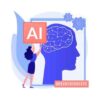Affective Computing Market Summary:
The Affective Computing Market is a rapidly growing industry that combines artificial intelligence and psychology to develop systems that can recognize, interpret, and respond to human emotions. This innovative technology has the potential to revolutionize various sectors, including healthcare, gaming, retail, and customer service. One of the key drivers of the Affective Computing Market is the increasing demand for personalized experiences. Companies are realizing the importance of understanding and catering to their customers’ emotions to enhance their overall experience. By analyzing facial expressions, voice tones, and other physiological signals, affective computing systems can provide personalized recommendations, improve customer satisfaction, and increase brand loyalty. In the healthcare sector, affective computing is being used to develop technologies that can detect and monitor mental health conditions. These systems can analyze speech patterns, facial expressions, and other behavioral cues to identify signs of depression, anxiety, and other mental disorders. Early identification can result in prompt actions and better patient outcomes.
The gaming industry is also leveraging affective computing to enhance user experiences. By analyzing players’ emotions, game developers can create more immersive and engaging gameplay. For example, affective computing systems can adjust the difficulty level of a game based on the player’s emotional state, ensuring a challenging yet enjoyable experience. Retailers are using affective computing to understand customer preferences and tailor their offerings accordingly. By analyzing emotions and facial expressions, retailers can gauge customer reactions to products and advertisements. This valuable data can be used to optimize marketing strategies, improve product design, and increase sales. The Affective Computing Market is poised for significant growth as businesses recognize the importance of understanding and responding to human emotions. This technology has the potential to transform various industries by providing personalized experiences, improving mental health care, enhancing gaming experiences, and optimizing retail strategies. As the demand for emotional intelligence in technology continues to rise, the Affective Computing Market is set to thrive.
Affective Computing Market Overview:
The Affective Computing Market overview provides a comprehensive understanding of the analyzed market. It includes an introduction to the market, its size, growth rate, and key trends. This aims to give clients a broad understanding of the market landscape. The market analysis of the Affective Computing Market delves deeper into the market dynamics, focusing on factors such as market drivers, challenges, and opportunities. It explores the macroeconomic and microeconomic factors affecting the market, industry regulations, and emerging market trends. The analysis provides valuable insights into the current and future market conditions.
The assessment of the Affective Computing Market is performed by taking various factors into consideration, like, for instance, the business expansion policies of key players, competitive analysis of the progress of new entrants and emerging players, and the revenue, financial, and opportunity analysis of market players. The also analyzed based on regional segmentation, type or technique, end-user spectrum, etc. This research implements the latest methodologies to help clients understand the overall market scenario and strategize accordingly. The Affective Computing Market report provides an overview of the different types of analysis conducted during the market research process, including but not limited to SWOT analysis, Porter's Five Forces analysis, PESTLE analysis, and market forecasting. These analyses provide a deeper understanding of the market dynamics and assist in making informed business decisions.
Major players included in the Affective Computing Market:
- Microsoft
- IBM
- Apple
- Qualcomm
- Affectiva
- Elliptic Labs
- Eyesight Technologies
- Sony Depthsensing Solutions
- Intel
- Pyreos
- Cognitec Systems
- Beyond Verbal
- Gesturetek
- Sightcorp
- Crowdemotion
- Kairos
- Nviso
- Pointgrab
- Eyeris
Affective Computing Market Segmentation:
By Component
- Software
- Hardware
By Technology
- Touch-based
- Touchless
By Software
- Gesture Recognition
- Speech Recognition
- Facial Feature Extraction
- Analytics Software
- Enterprise Software
By Hardware
- Sensors
- Cameras
- Storage Devices and Processors
- Others
By Verticals
- Academia and Research
- Media and Entertainment
- IT and Telecom
- Government and Defense
- Healthcare and Lifesciences
- Retail and eCommerce
- Automotive
- Banking, Financial Services, And Insurance
- Others
Future Market Analytics Focus Points:
- SWOT Analysis
- Key Market Trends
- Key Data -Points Affecting Market Growth
- Revenue and Forecast Analysis
- Growth Opportunities For New Entrants and Emerging Players
- Key Player and Market Growth Matrix
Affective Computing Market Competitive Analysis:
The competitive analysis of the Affective Computing Market assesses the competitive landscape of the market. It includes evaluating key players in the industry, their market share, business strategies, and competitive advantages. The competitive analysis also highlights the strengths and weaknesses of major competitors, allowing clients to understand the competitive positioning of companies operating in the market.
Objectives of the Study:
- To provide a comprehensive analysis on the Affective Computing Market by segmentation and by region
- To cater extensive insights on factors influencing the market growth (drivers, restraints, industry-specific restraints, business expansion opportunities)
- To anticipate and analyse the market size expansion in key regions- North America, Europe, Asia Pacific, Latin America and Middle East and Africa
- To record and evaluate competitive landscape mapping- strategic alliances and mergers, technological advancements and product launches, revenue and financial analysis of key market players
How our market research reports help clients:
Our market research reports provide valuable insights to clients in their decision-making process and support their growth and market capture efforts. They offer:
- Comprehensive understanding of market trends, dynamics, and growth potential.
- Identification of niche markets and emerging opportunities.
- Assessment of competitive landscape and strategic benchmarking.
- Insights into consumer preferences, buying behavior, and market demand.
- Risk assessment and mitigation strategies.
- Market forecasting and trend analysis for informed business planning.
- Understanding product development, pricing, and other strategies.
In case of any specific requirements or changes to the current table of content based on your scope, please contact us at: enquiry@futuremarketanalytics.com






















